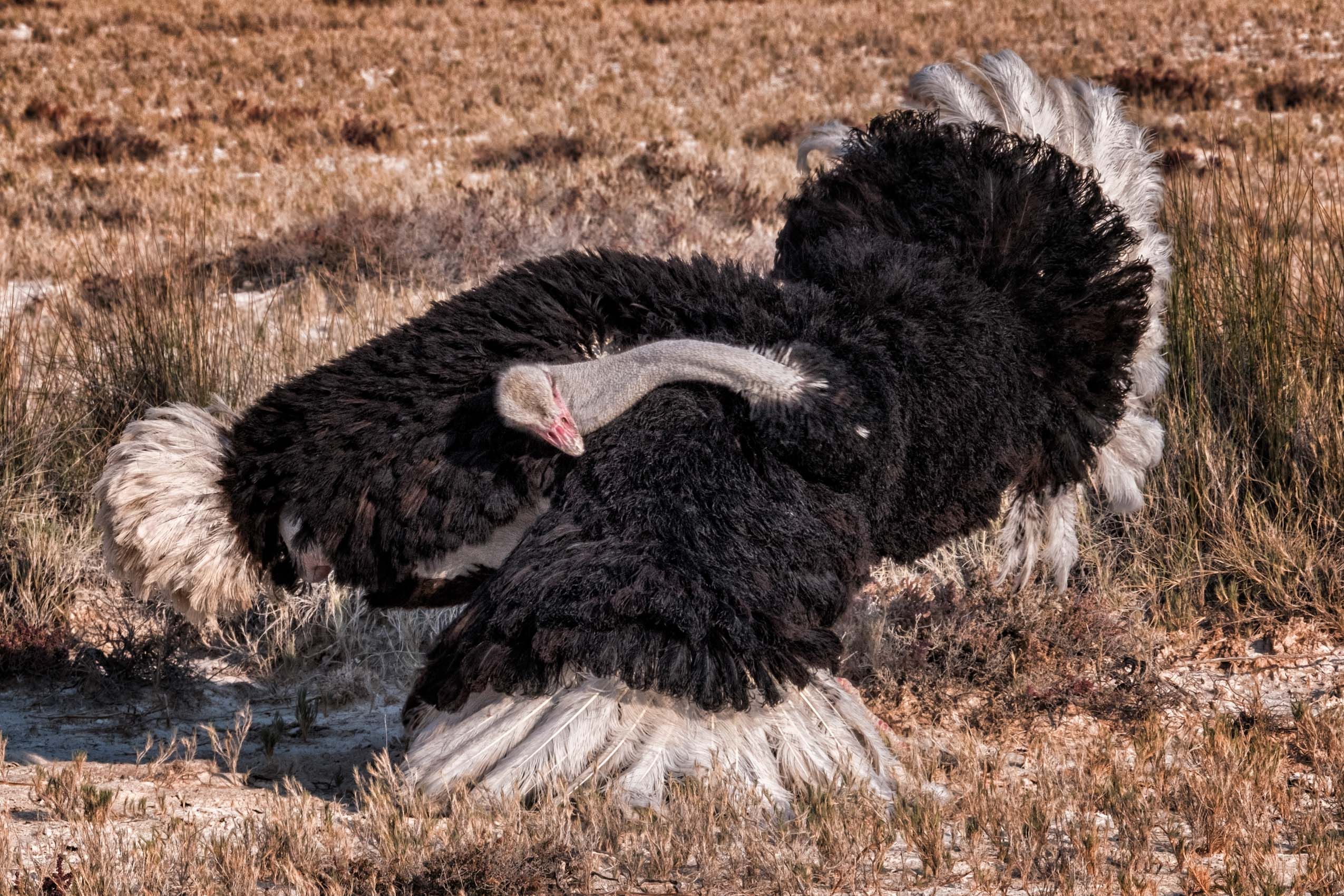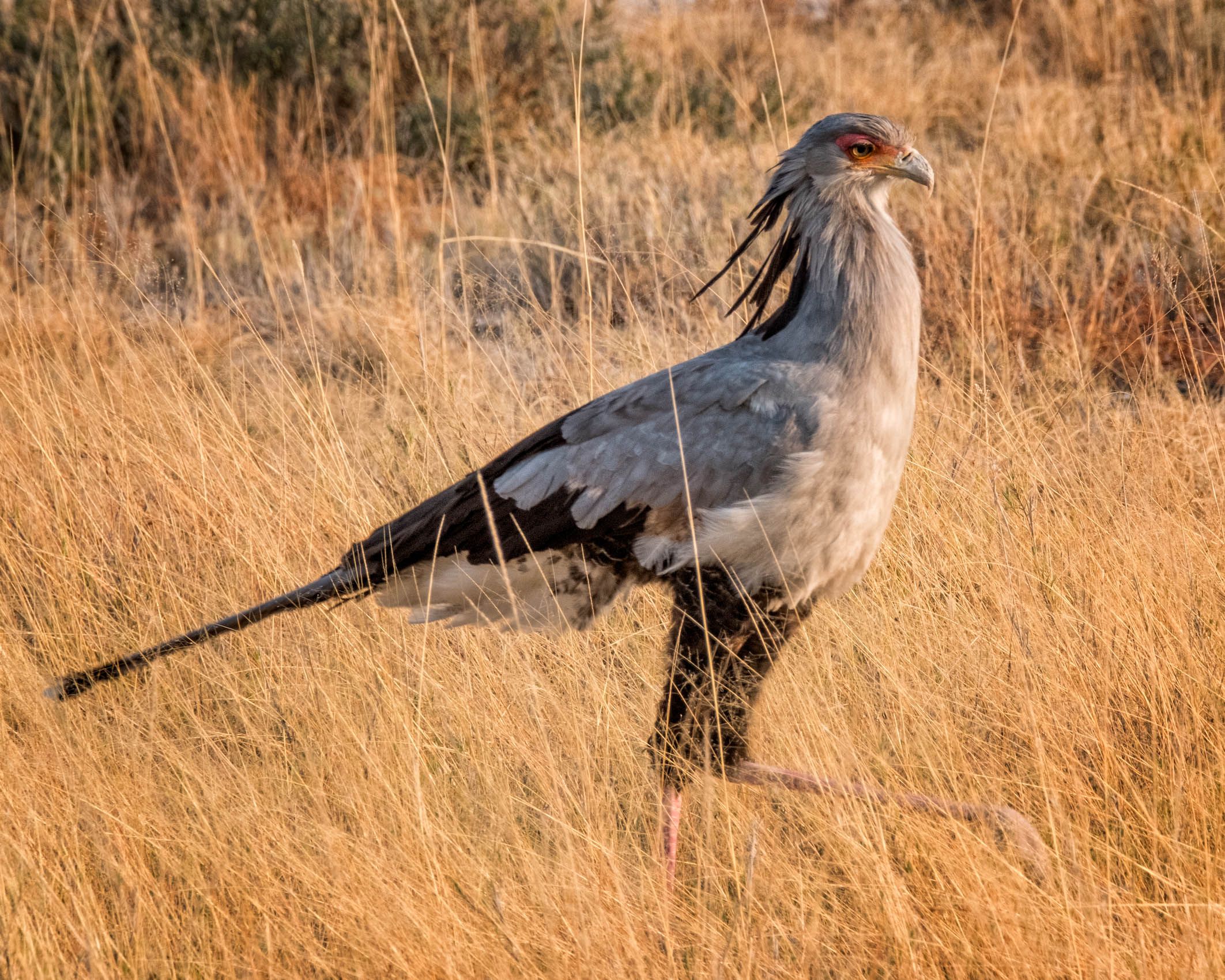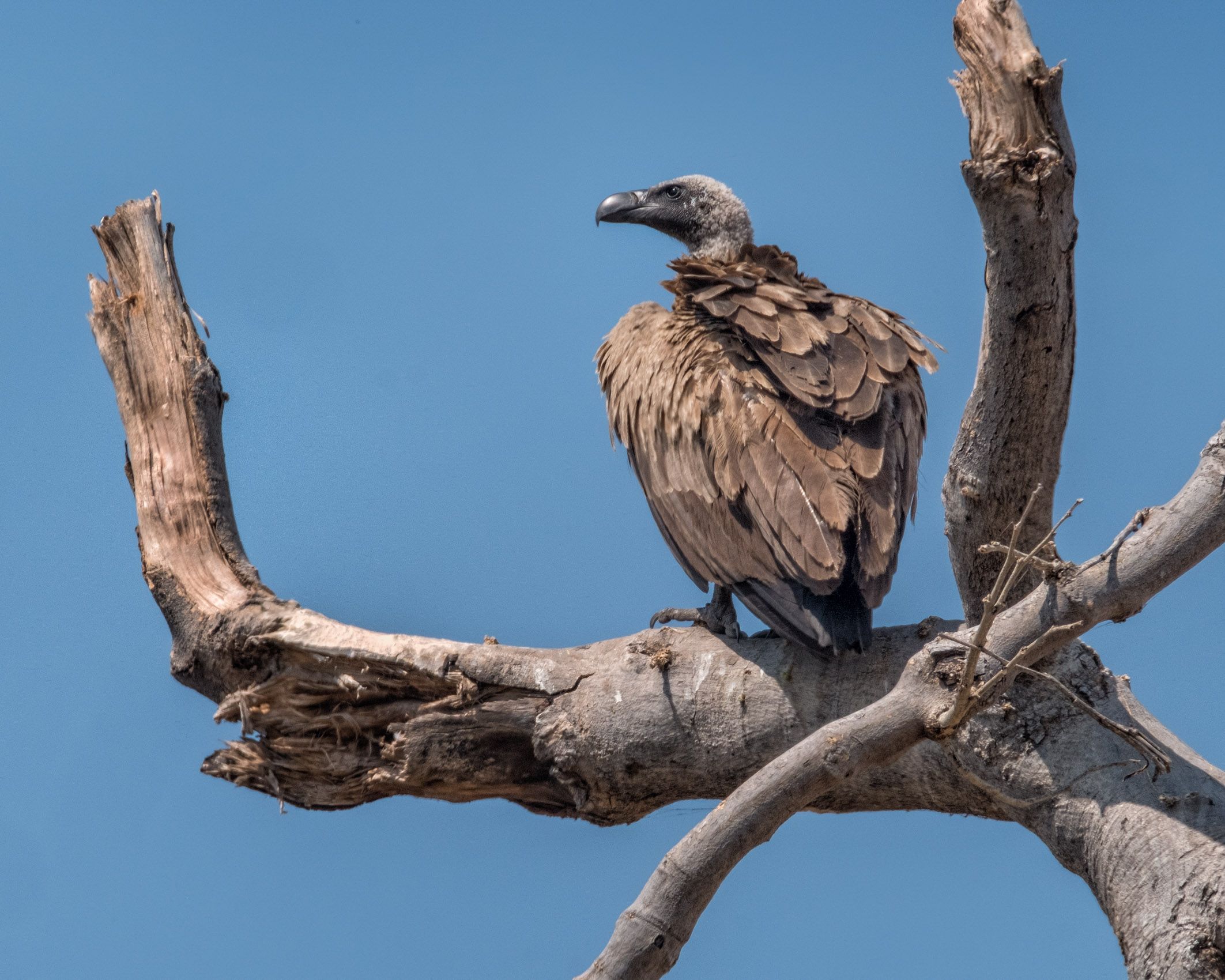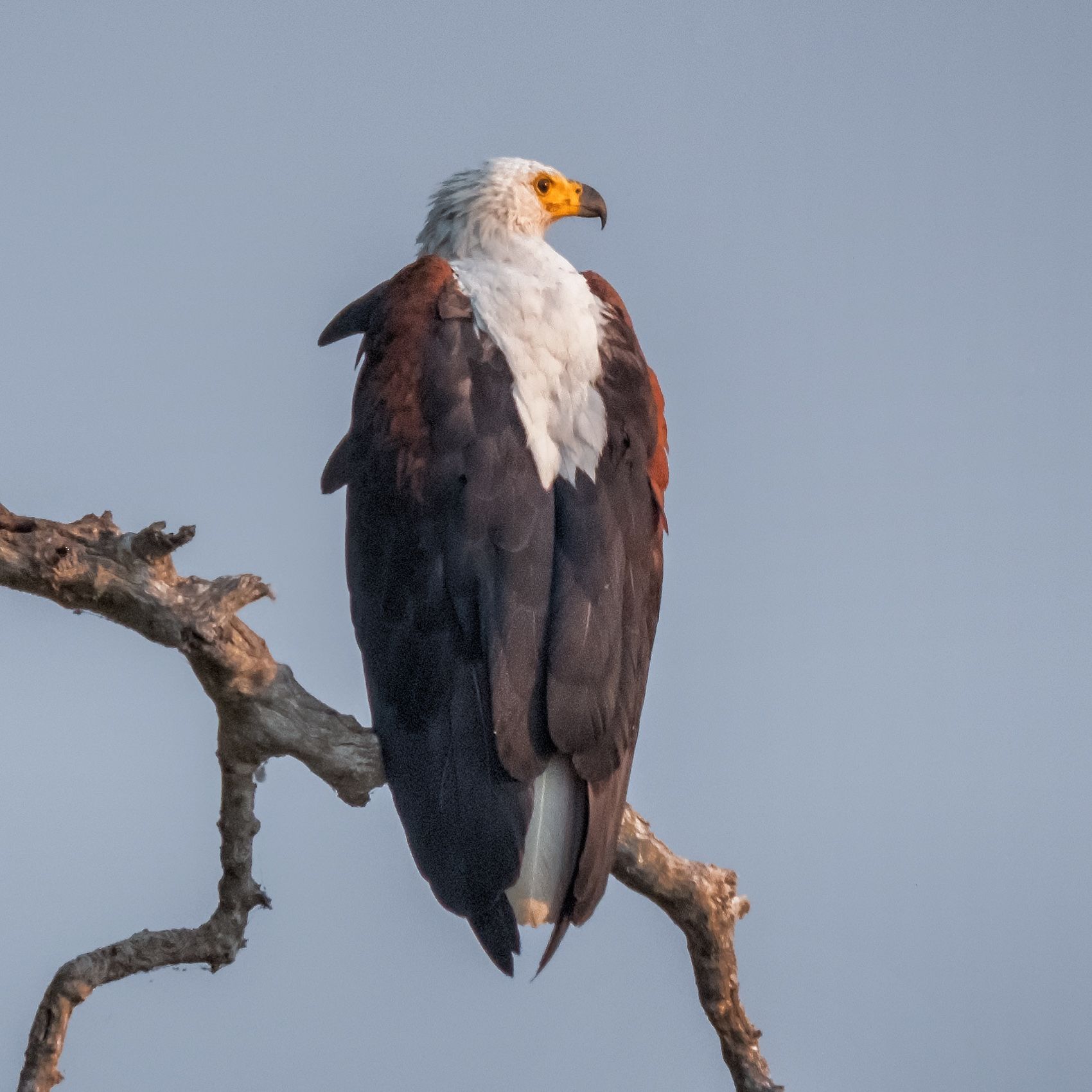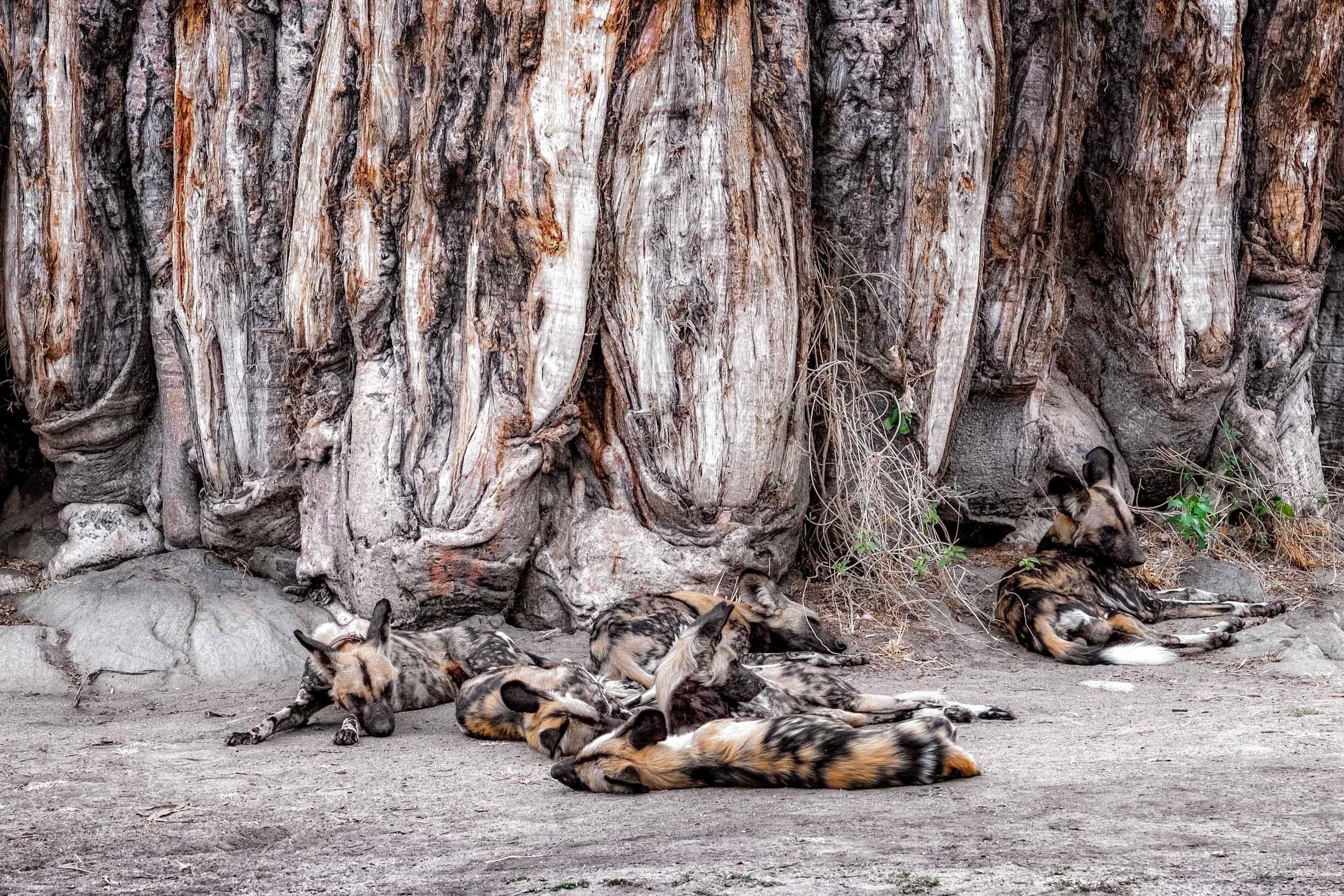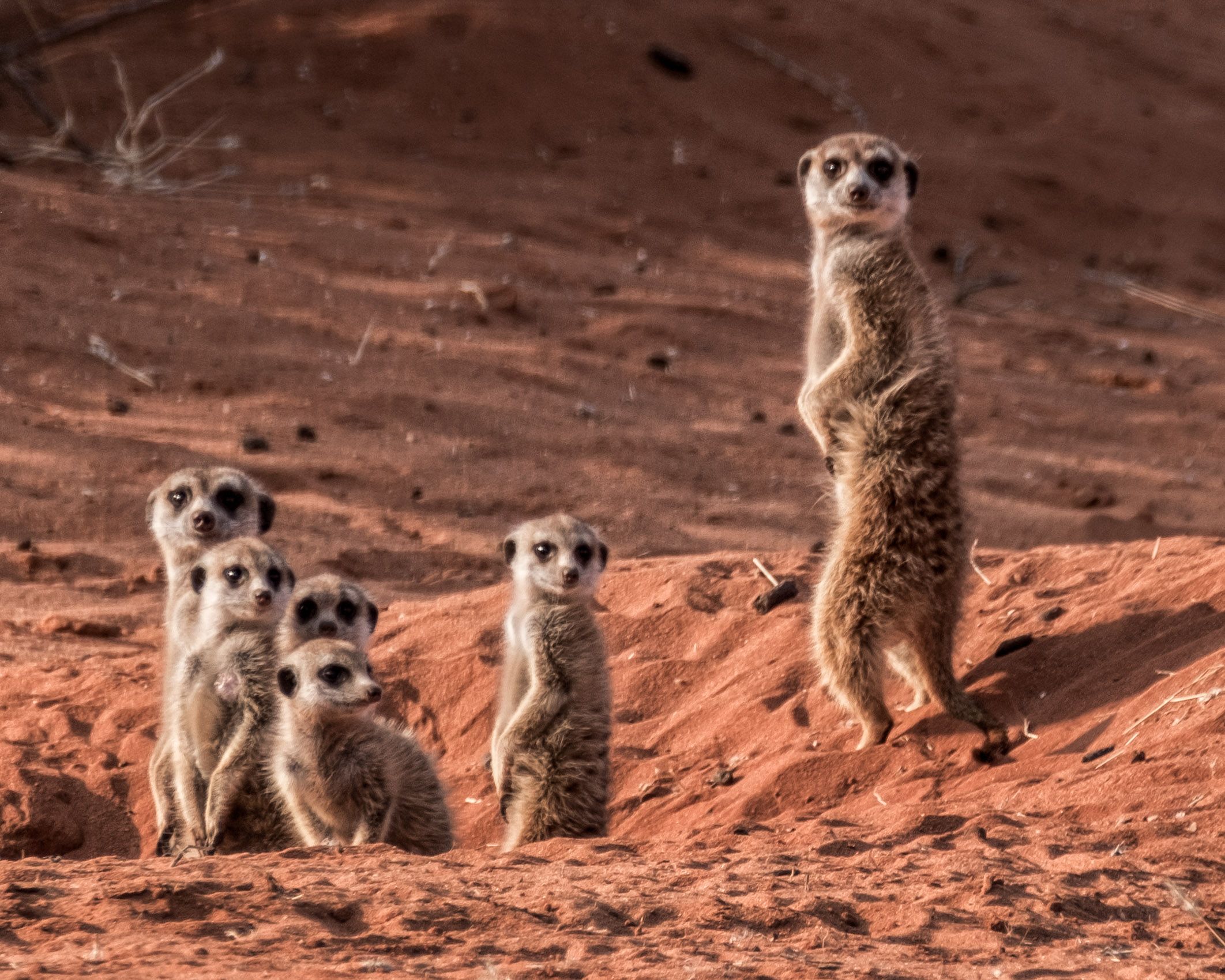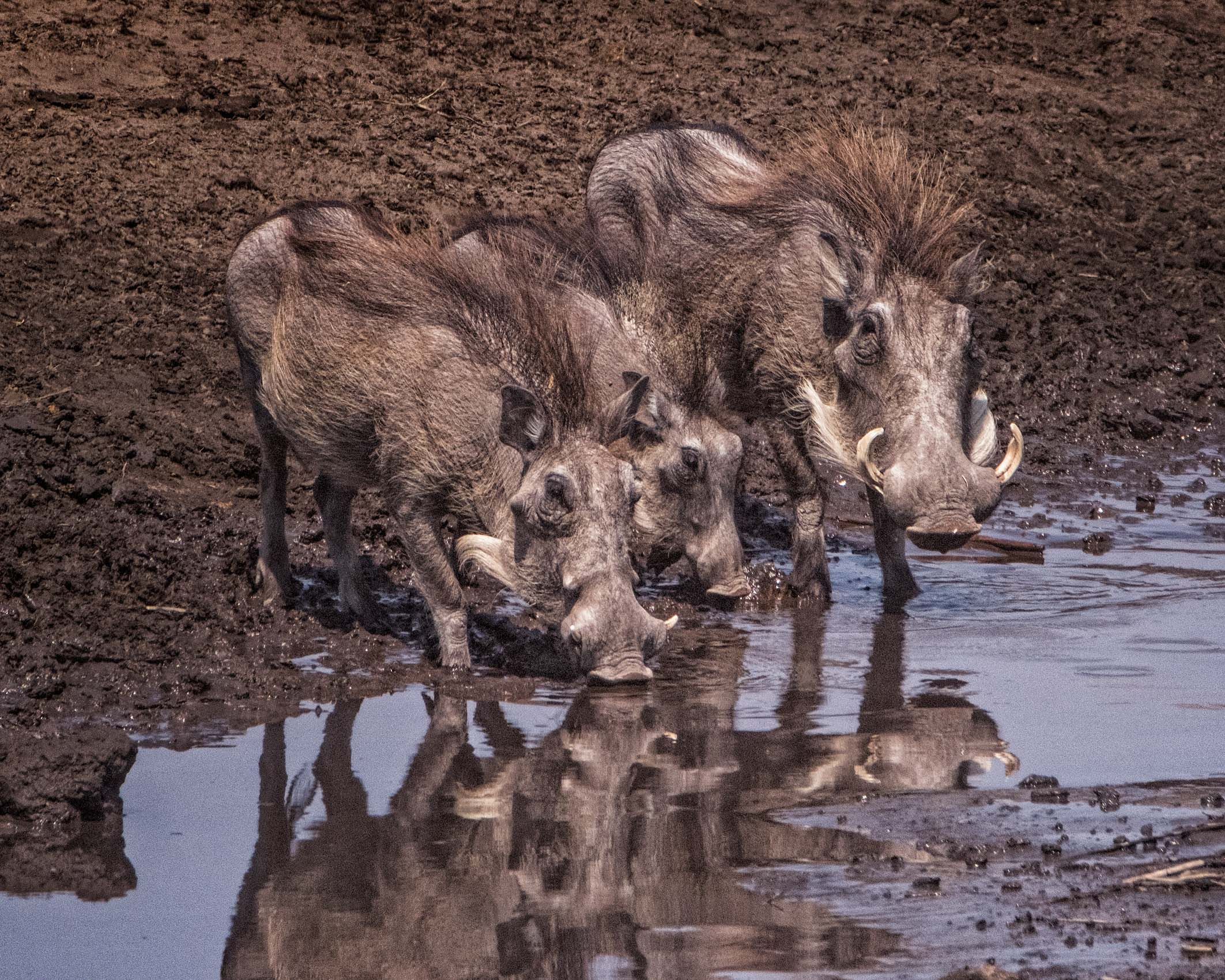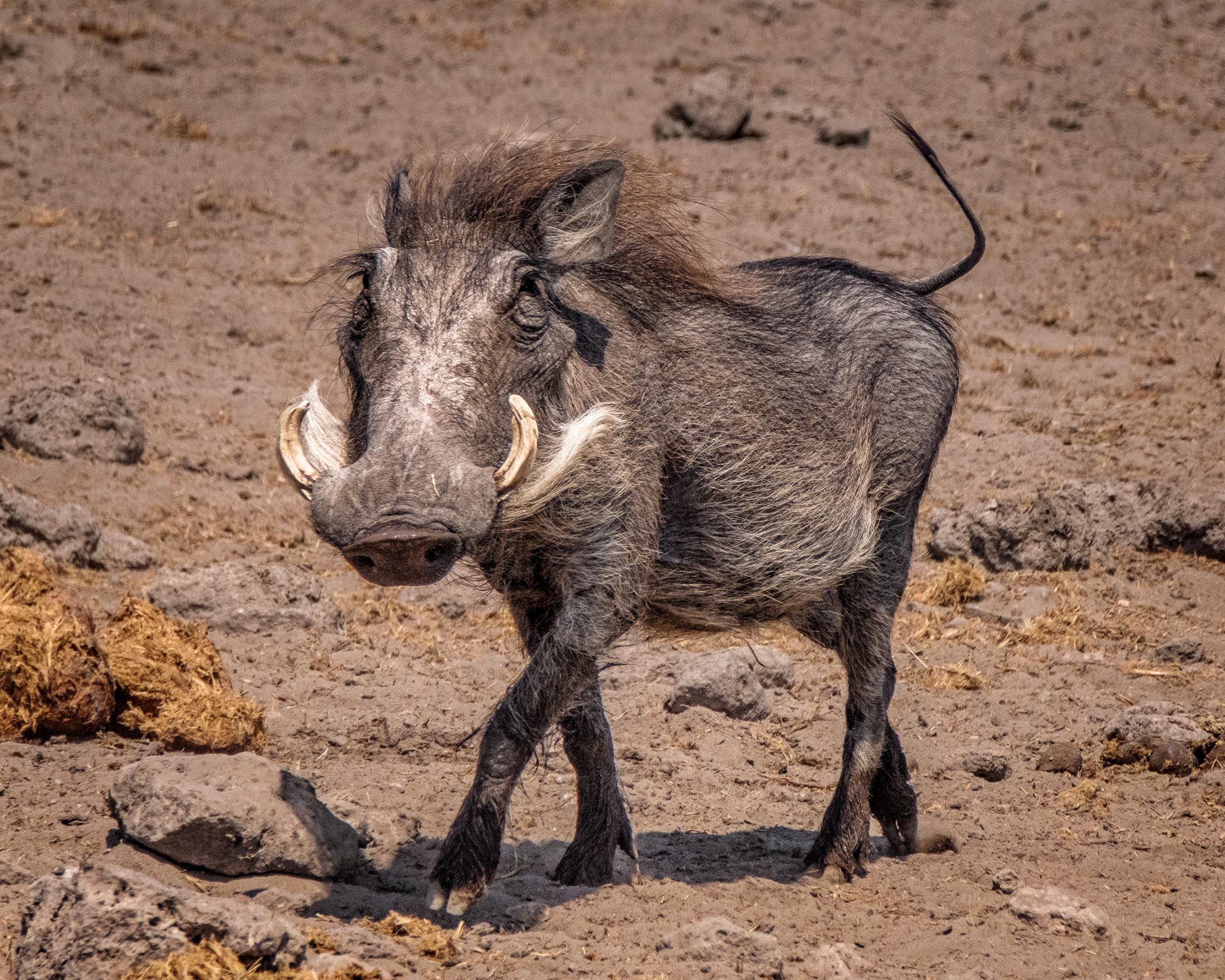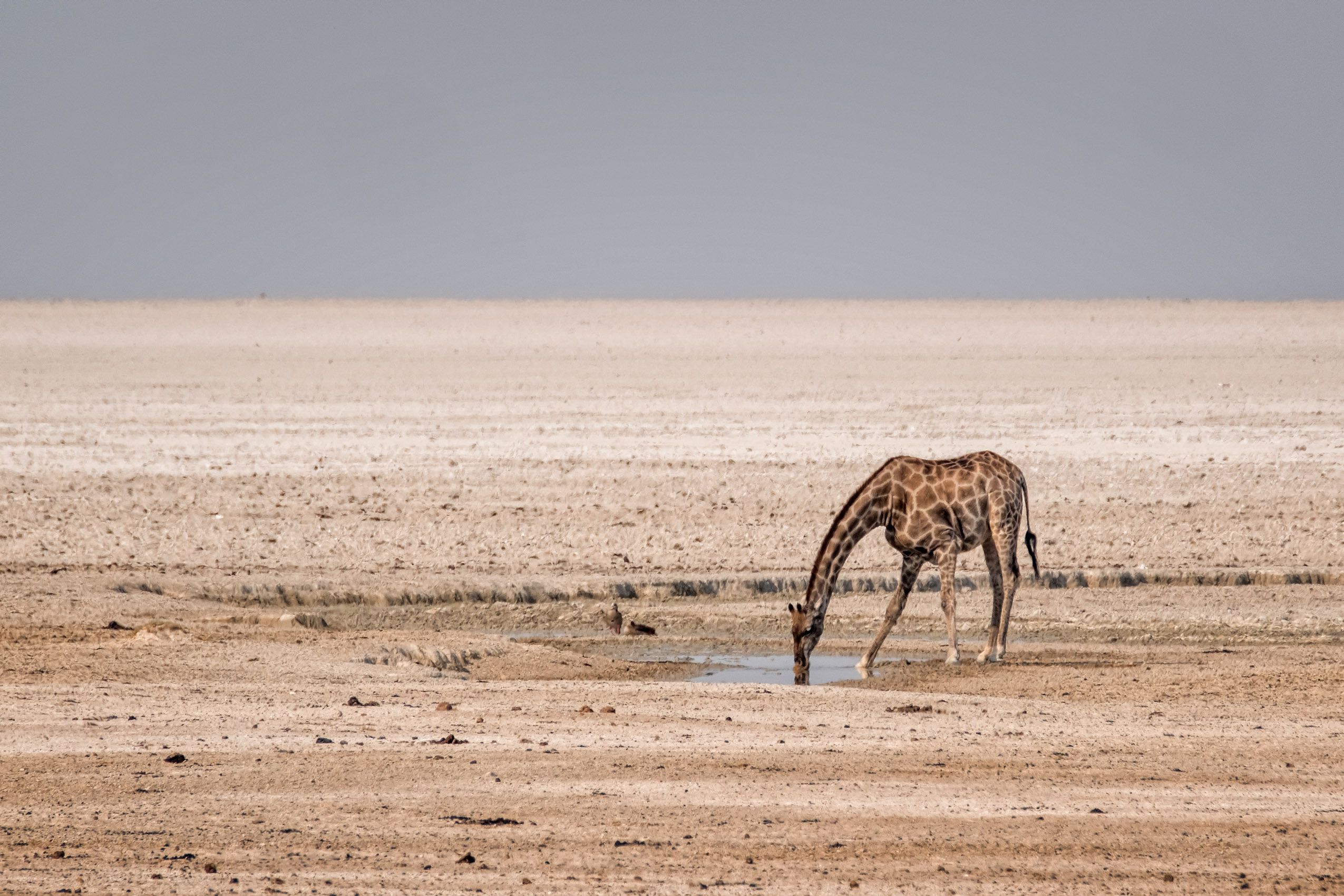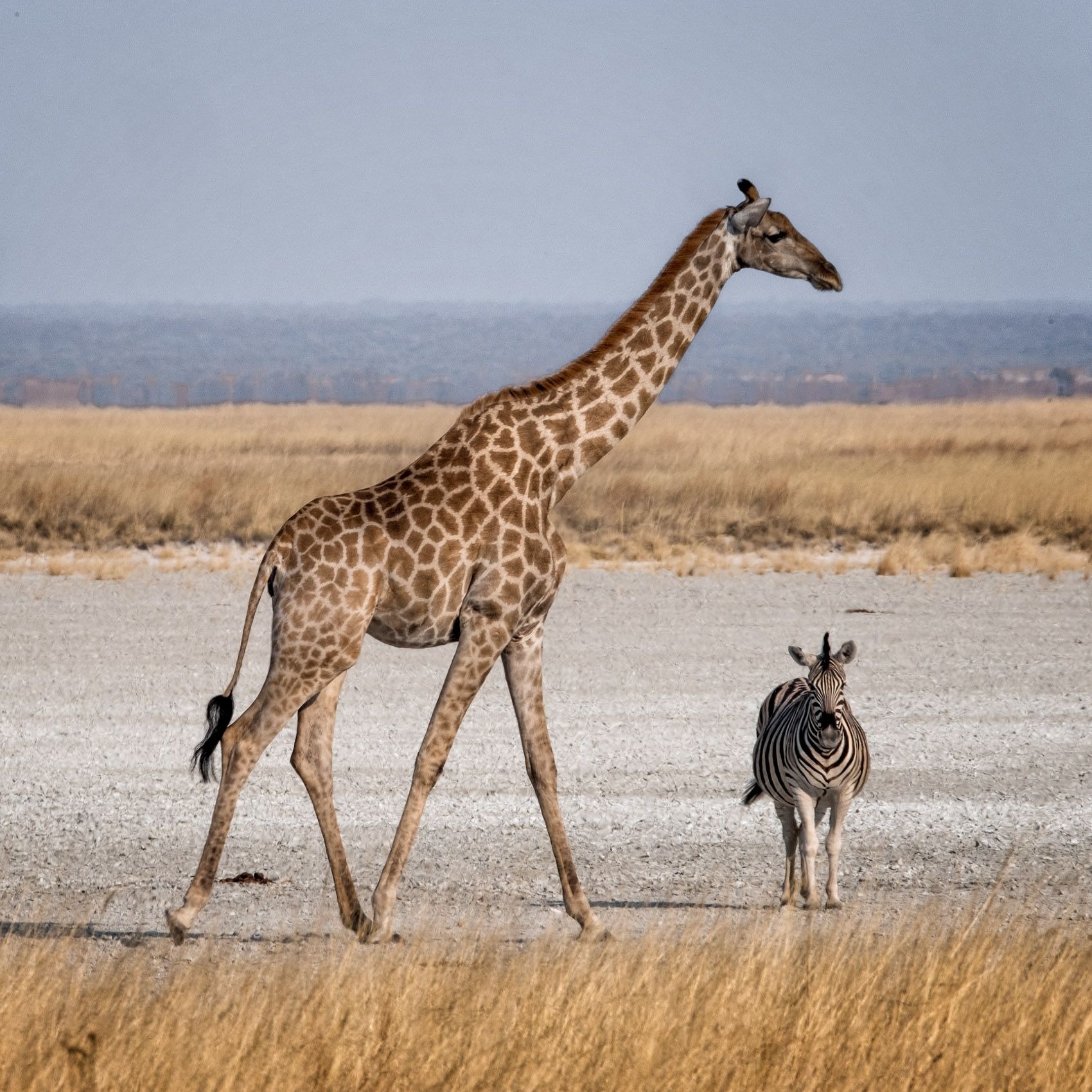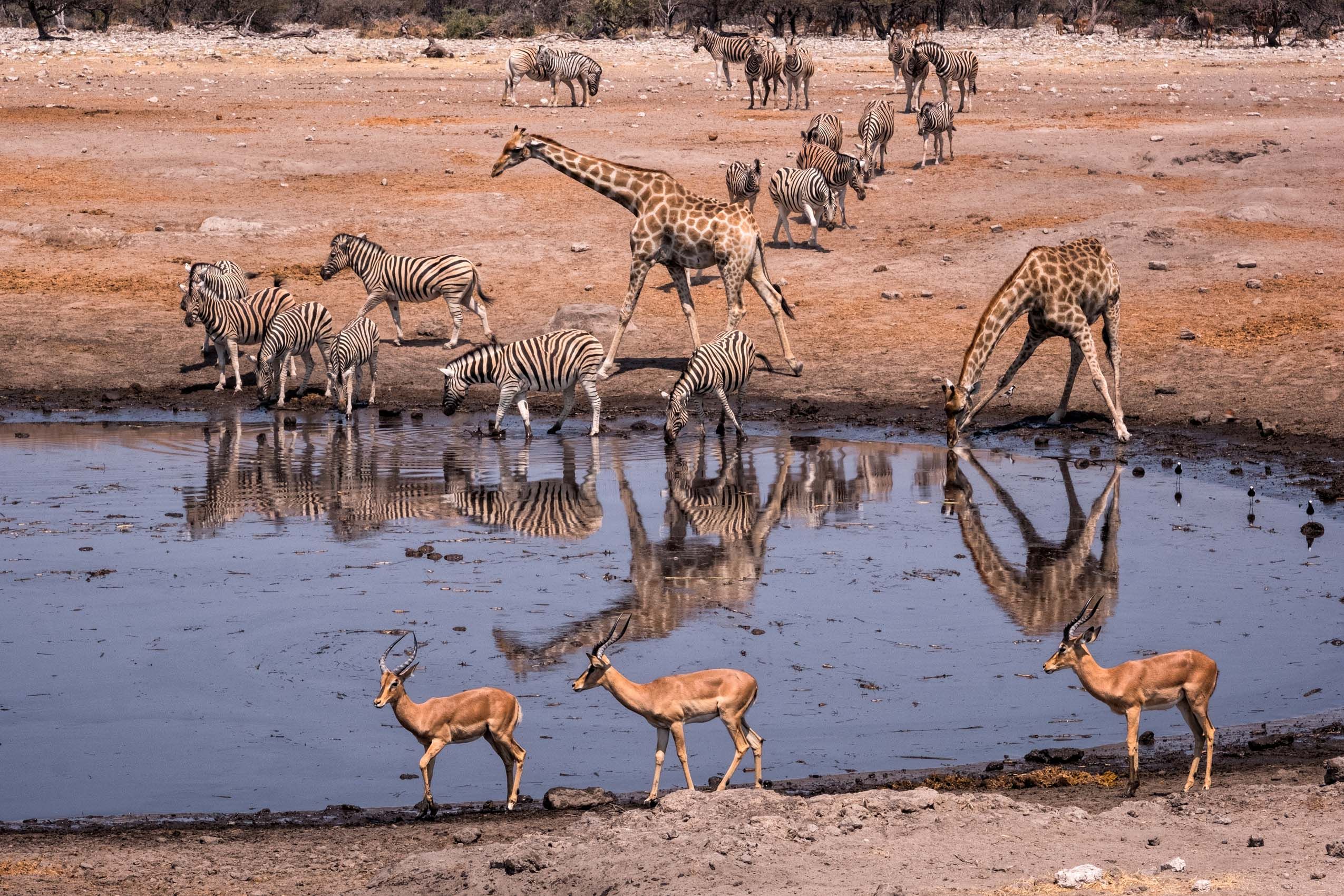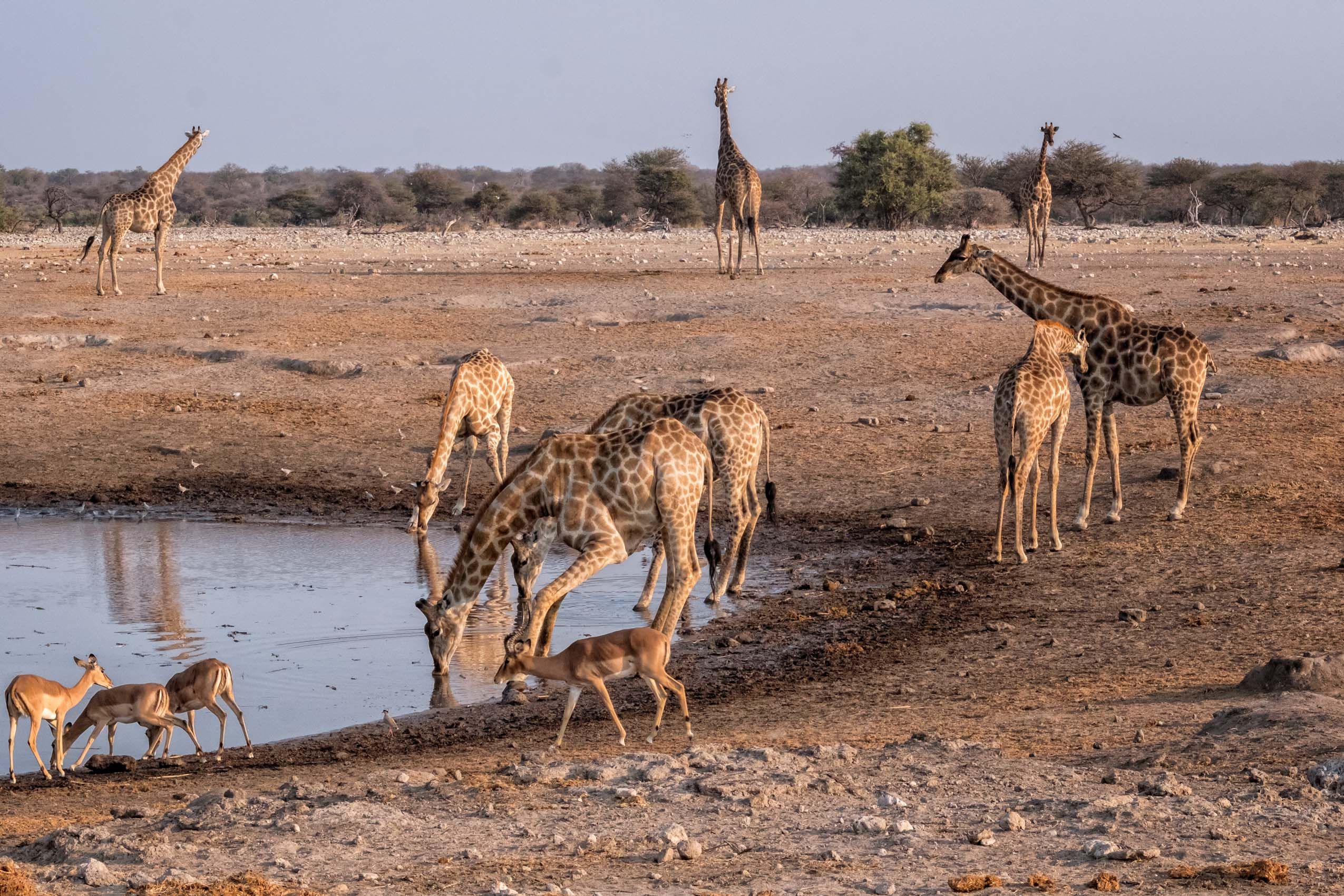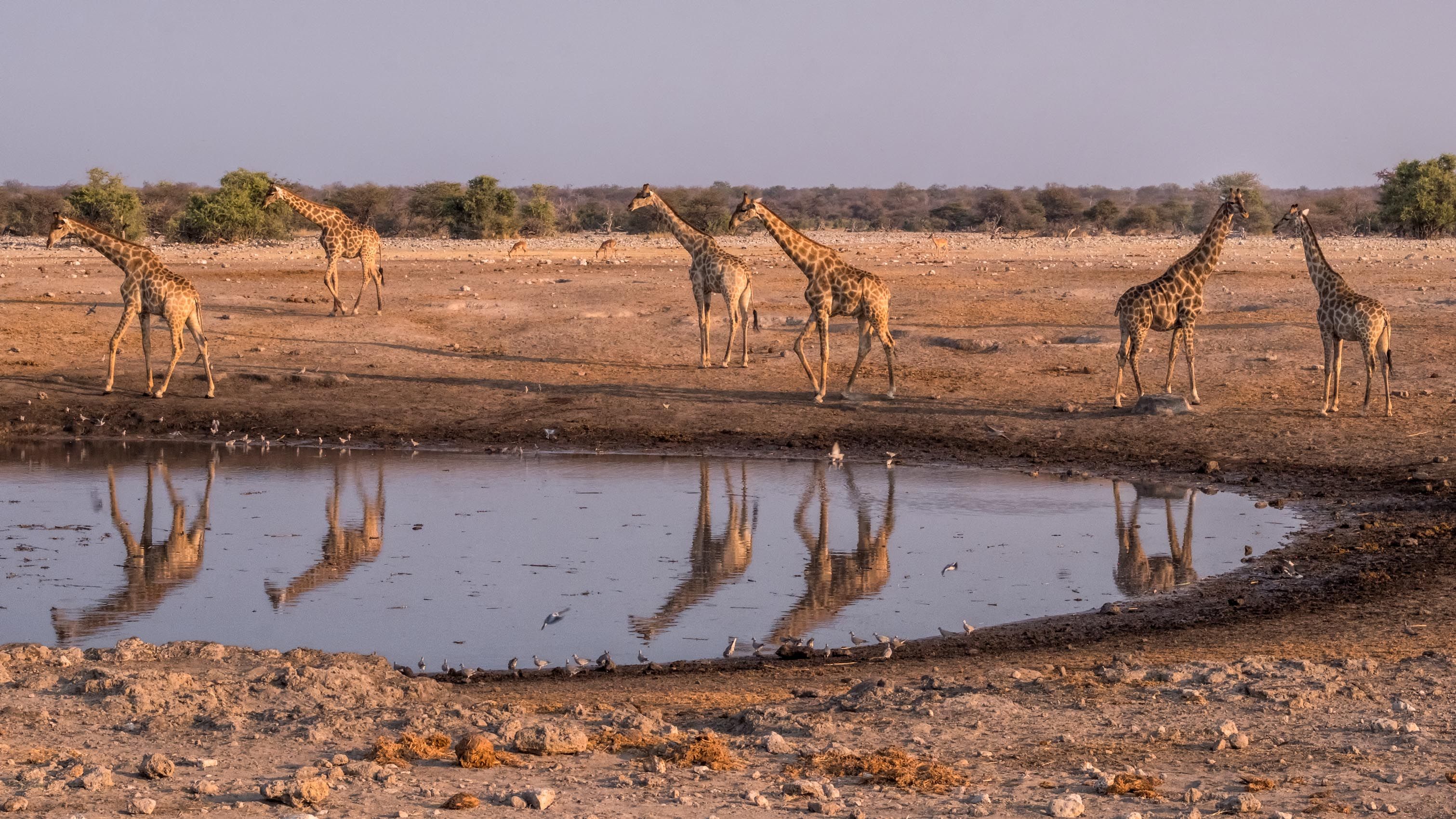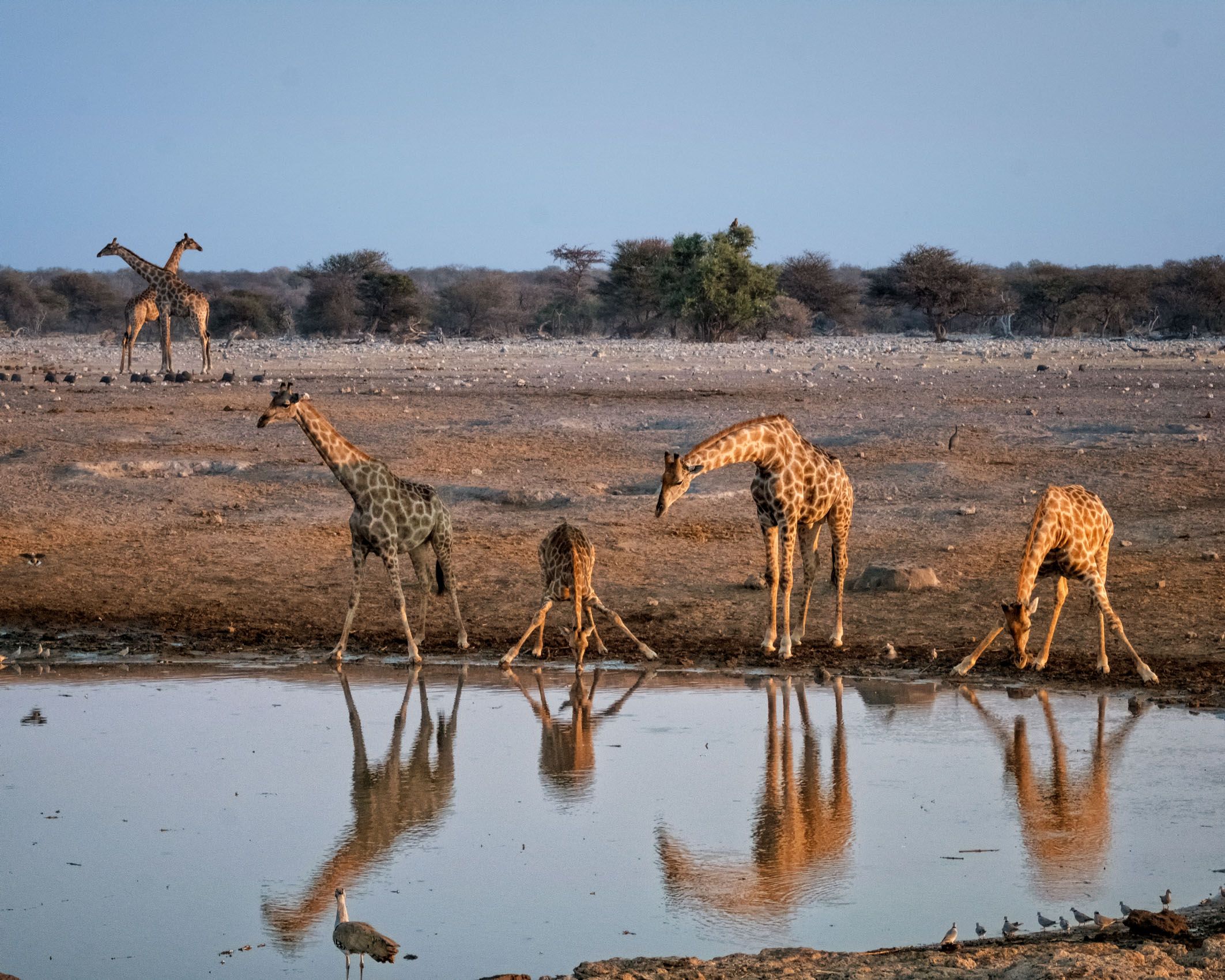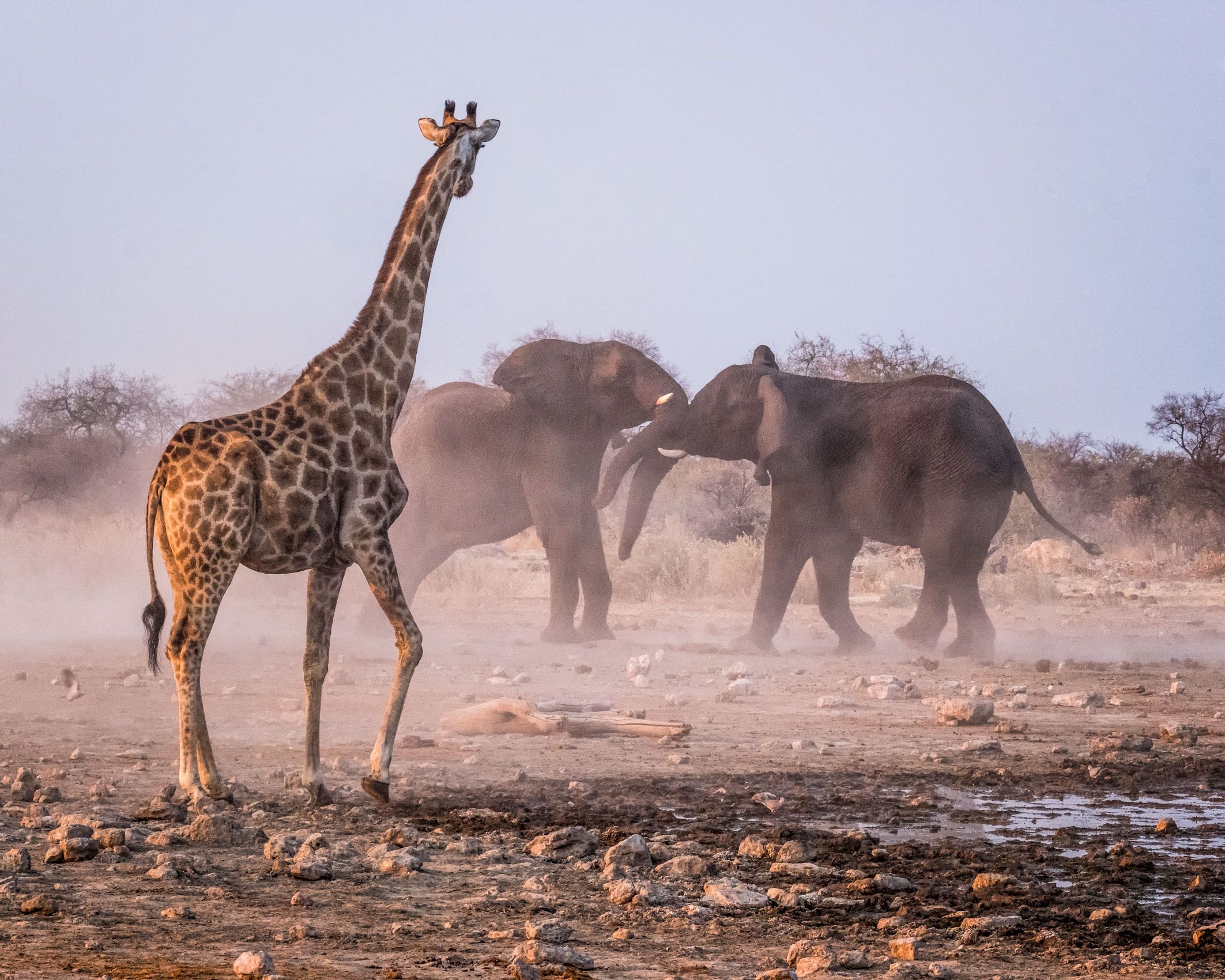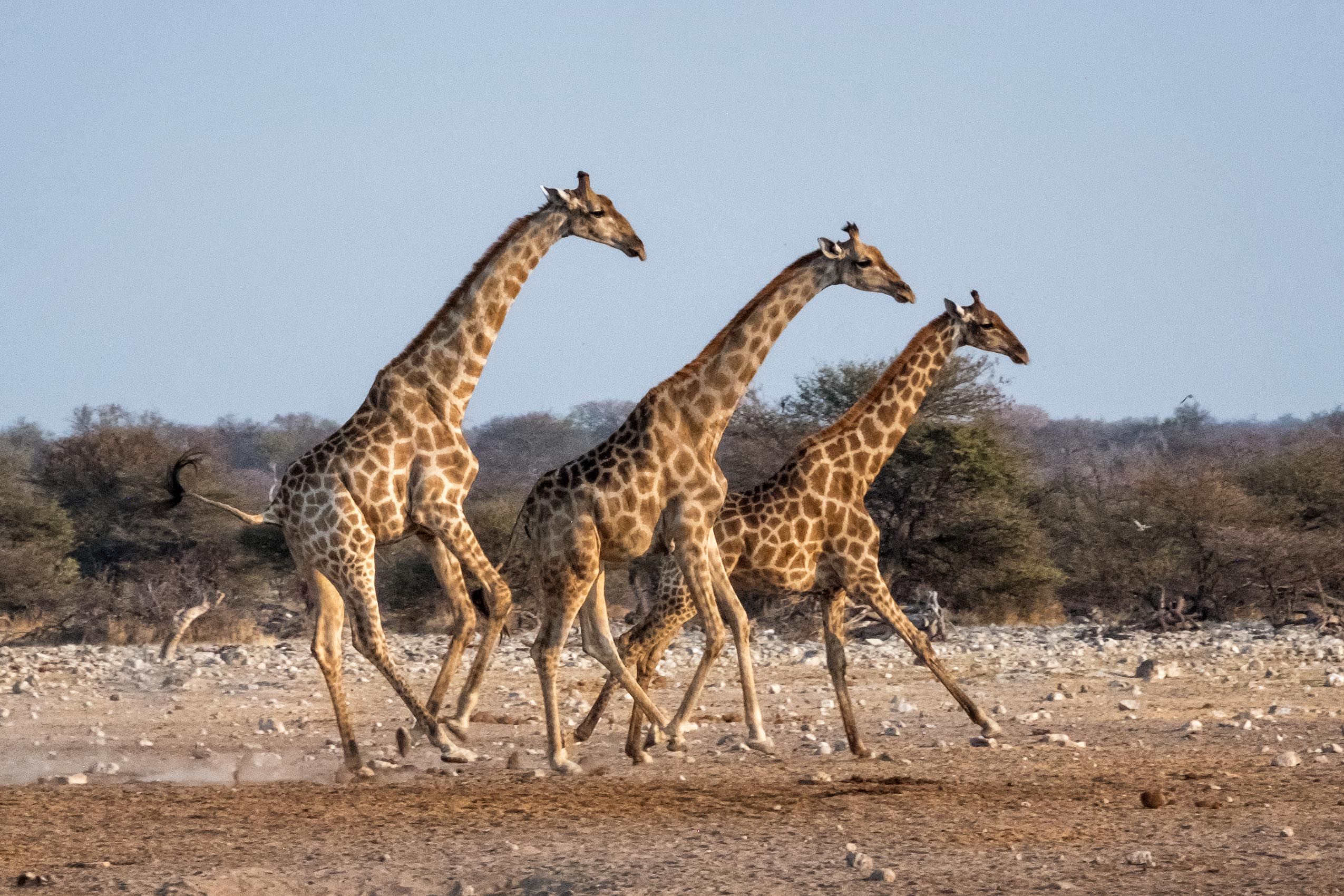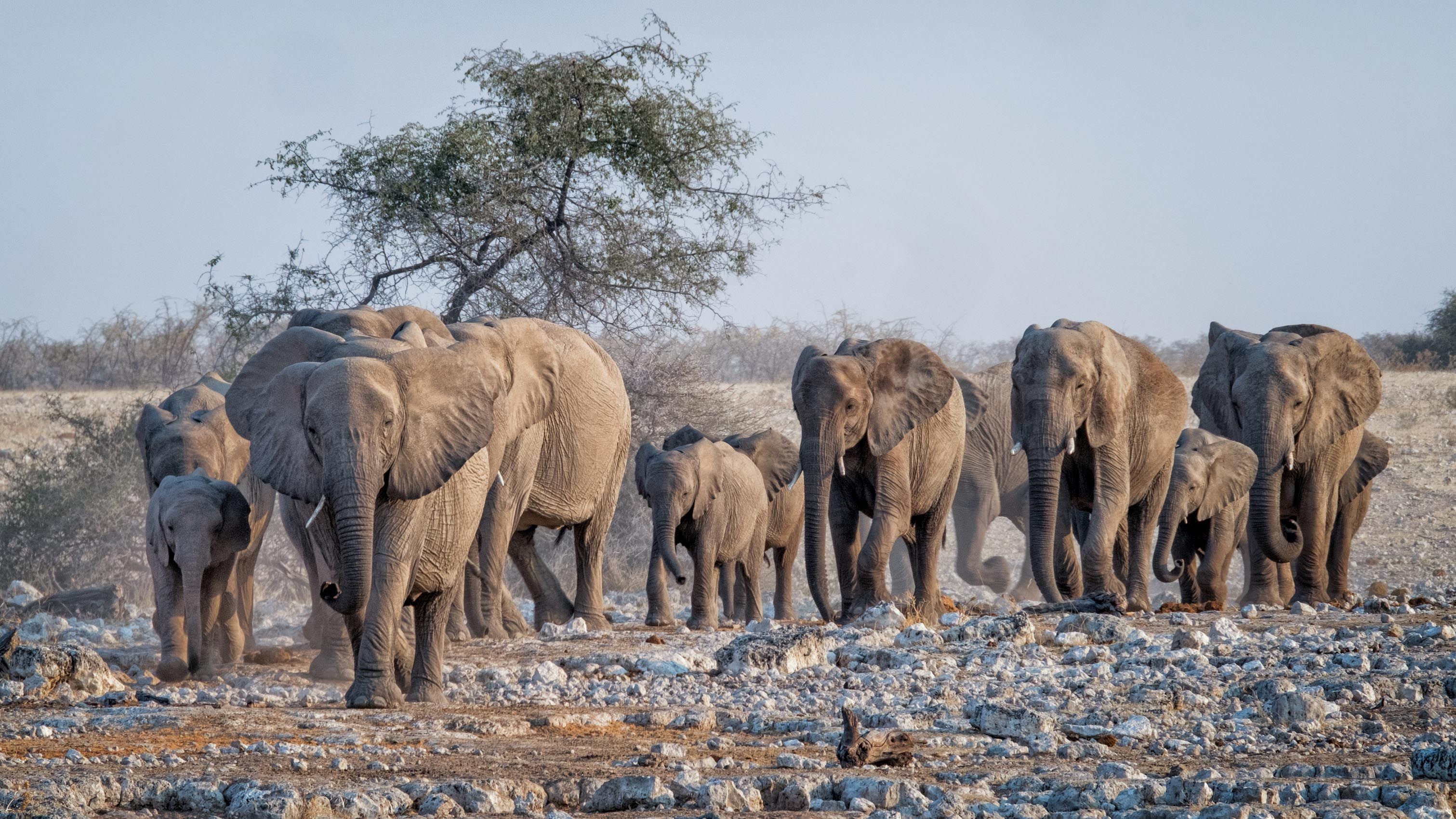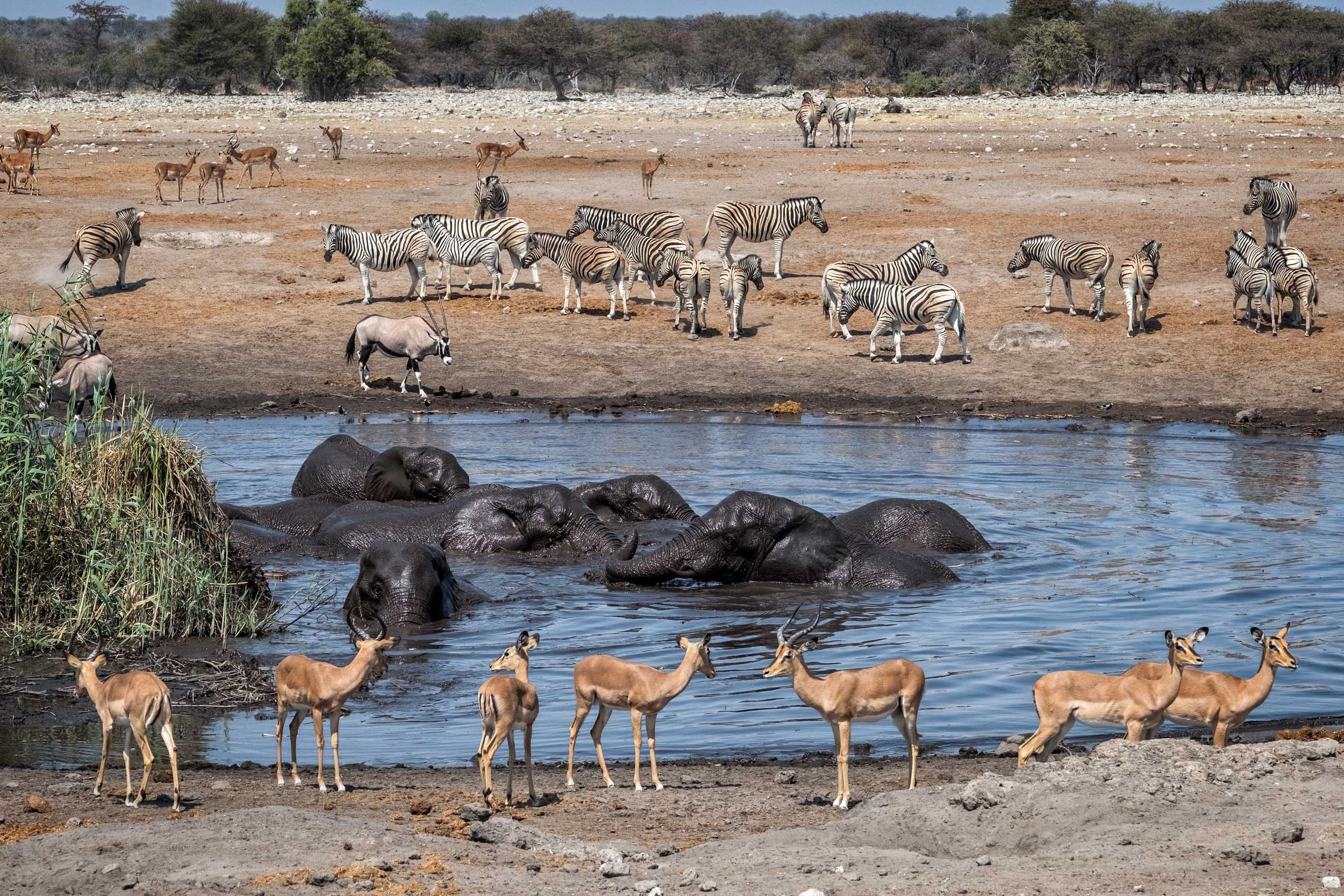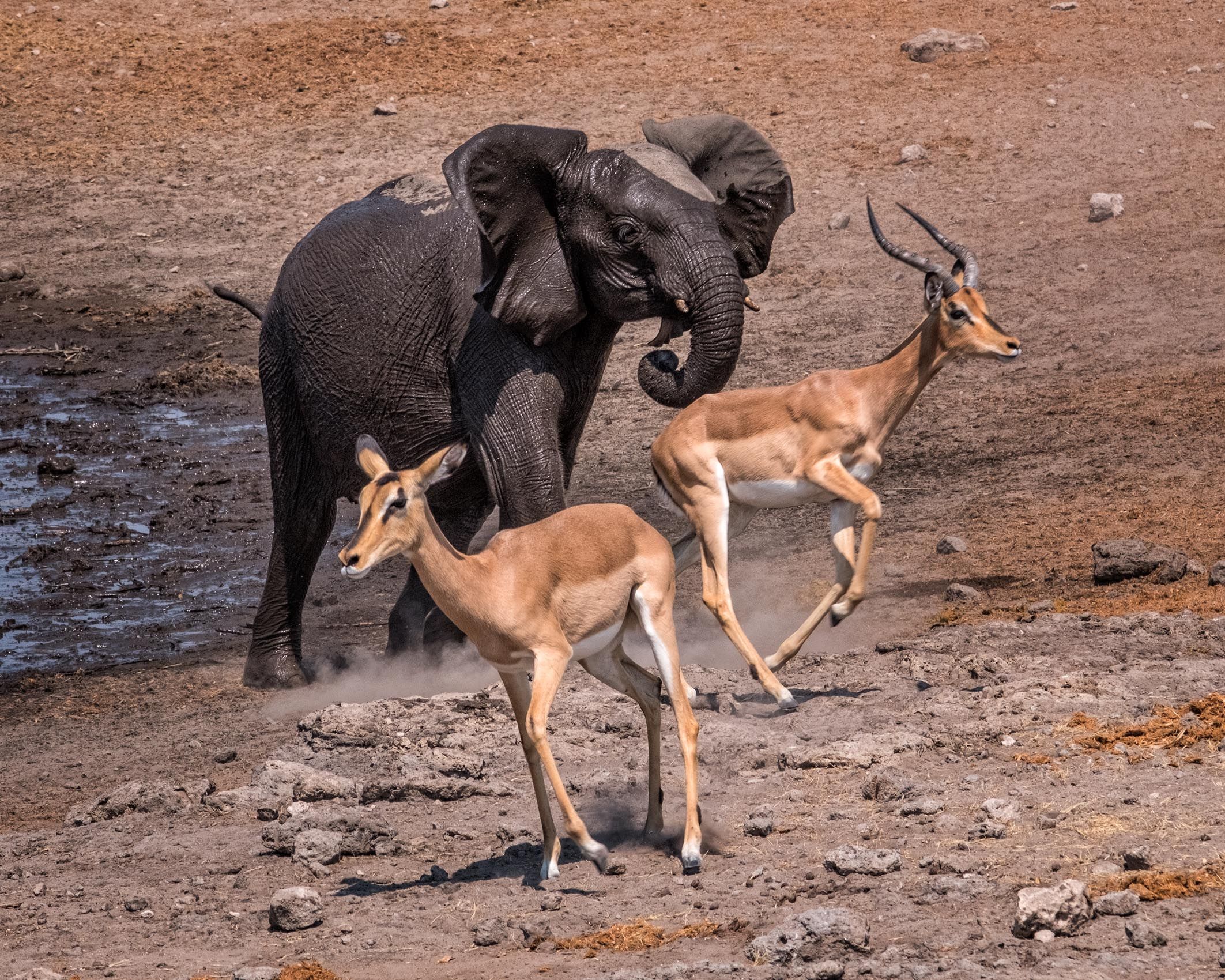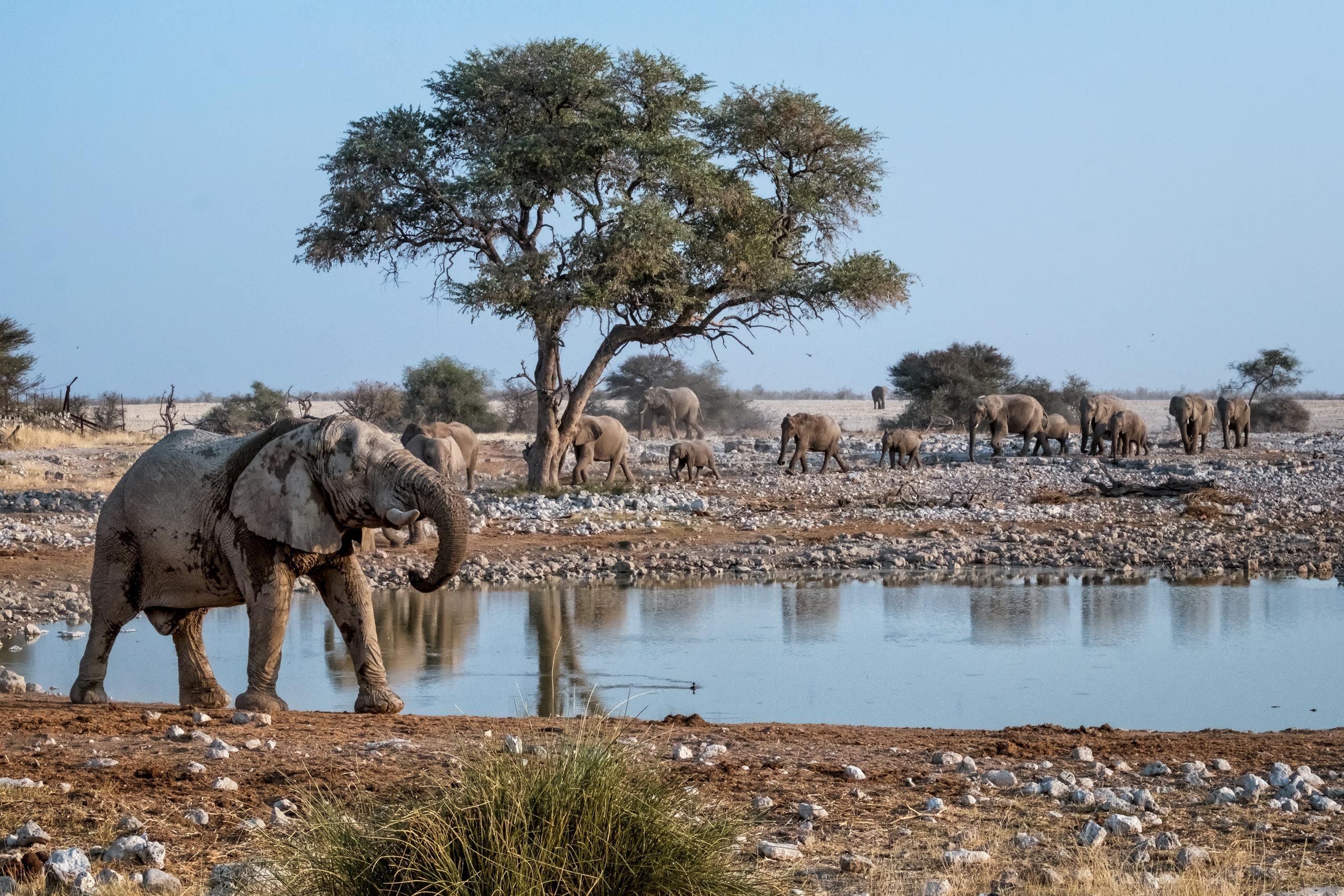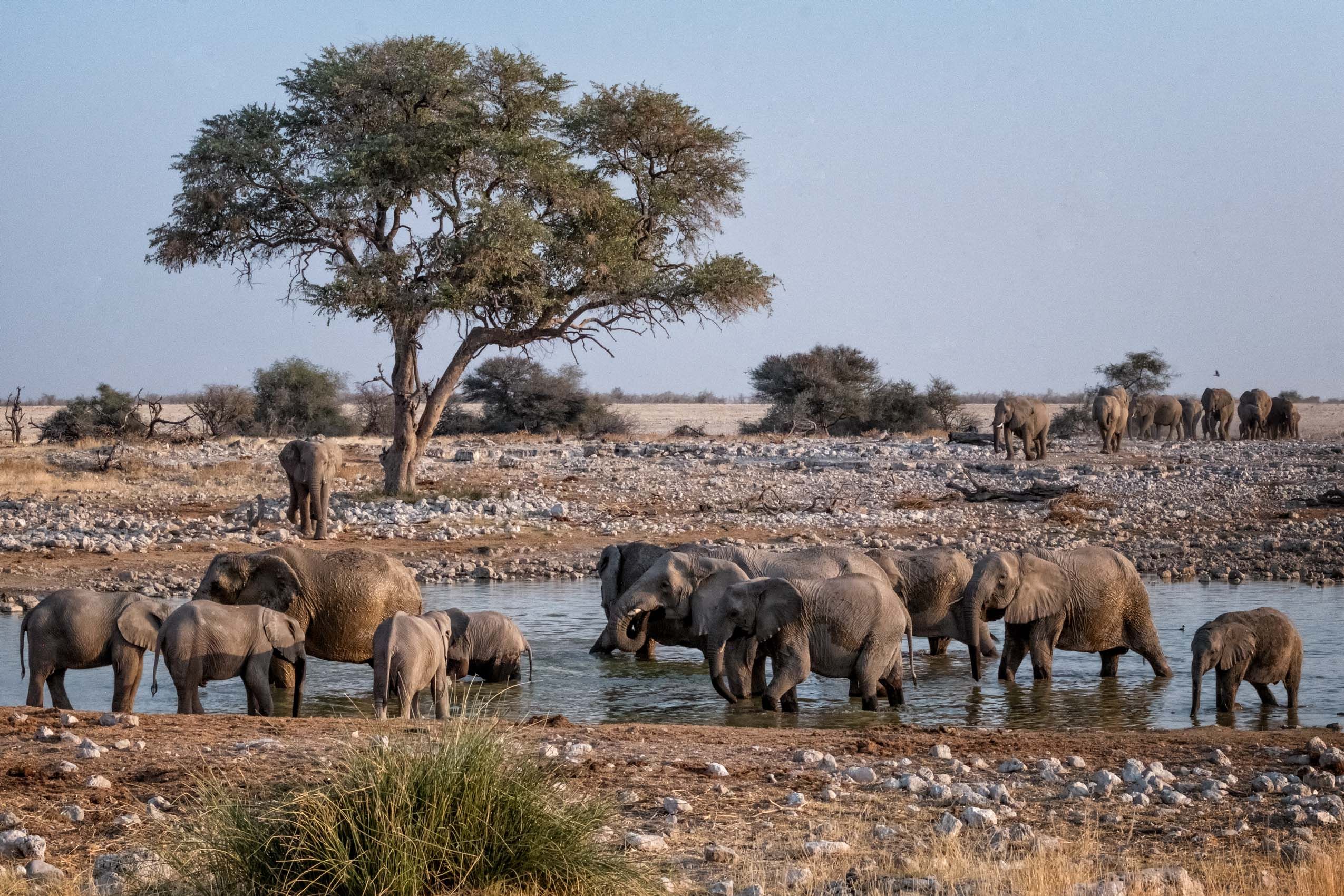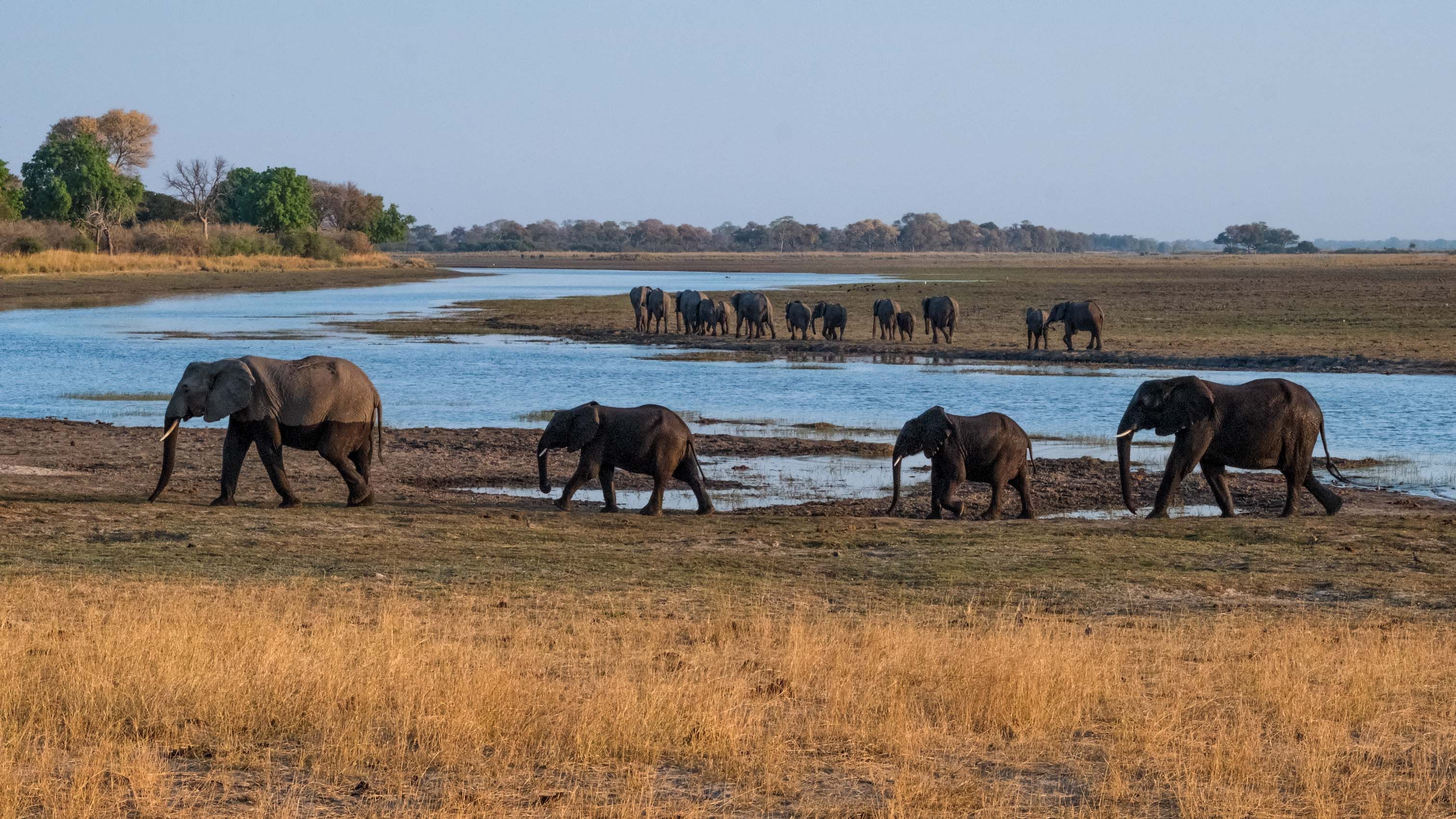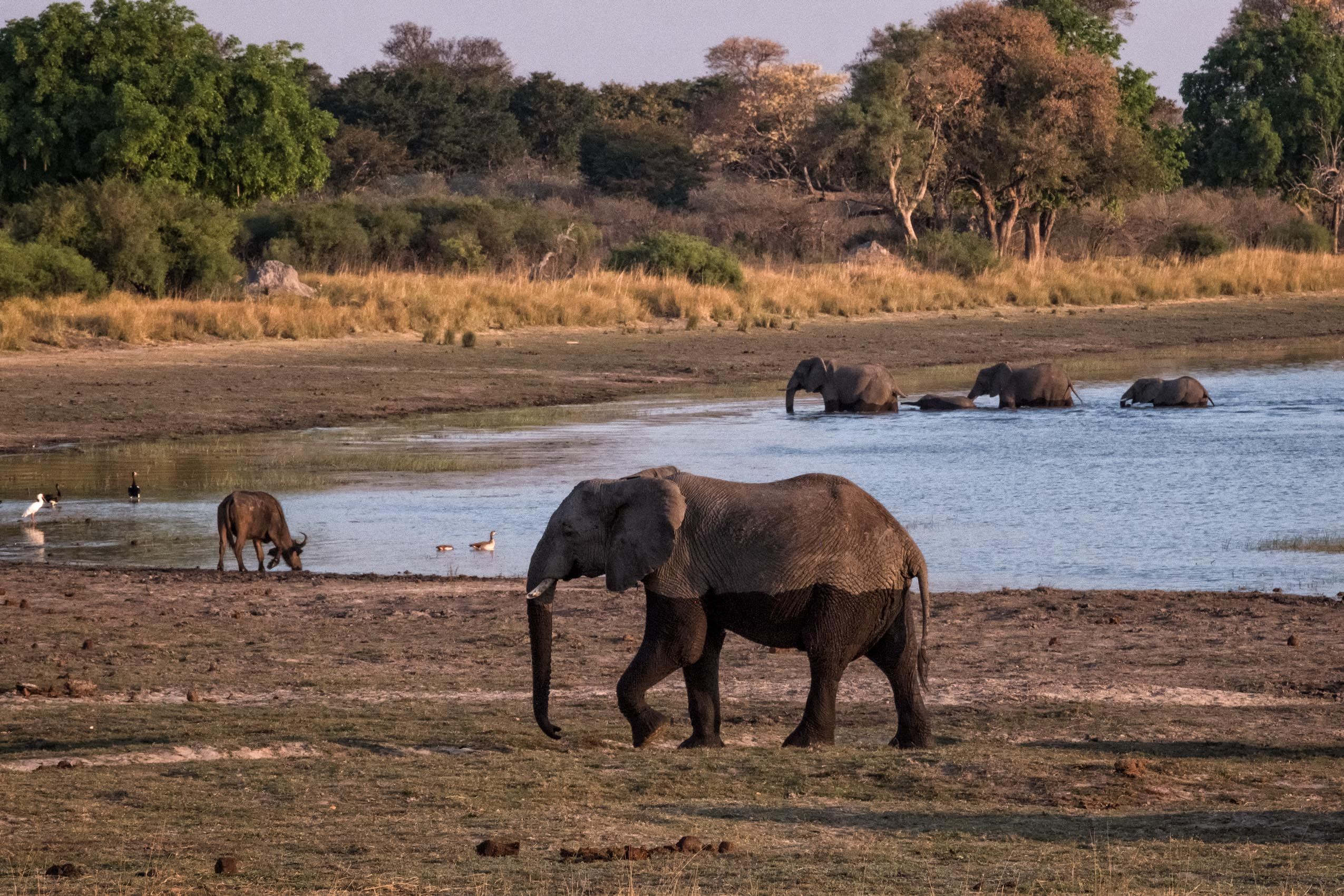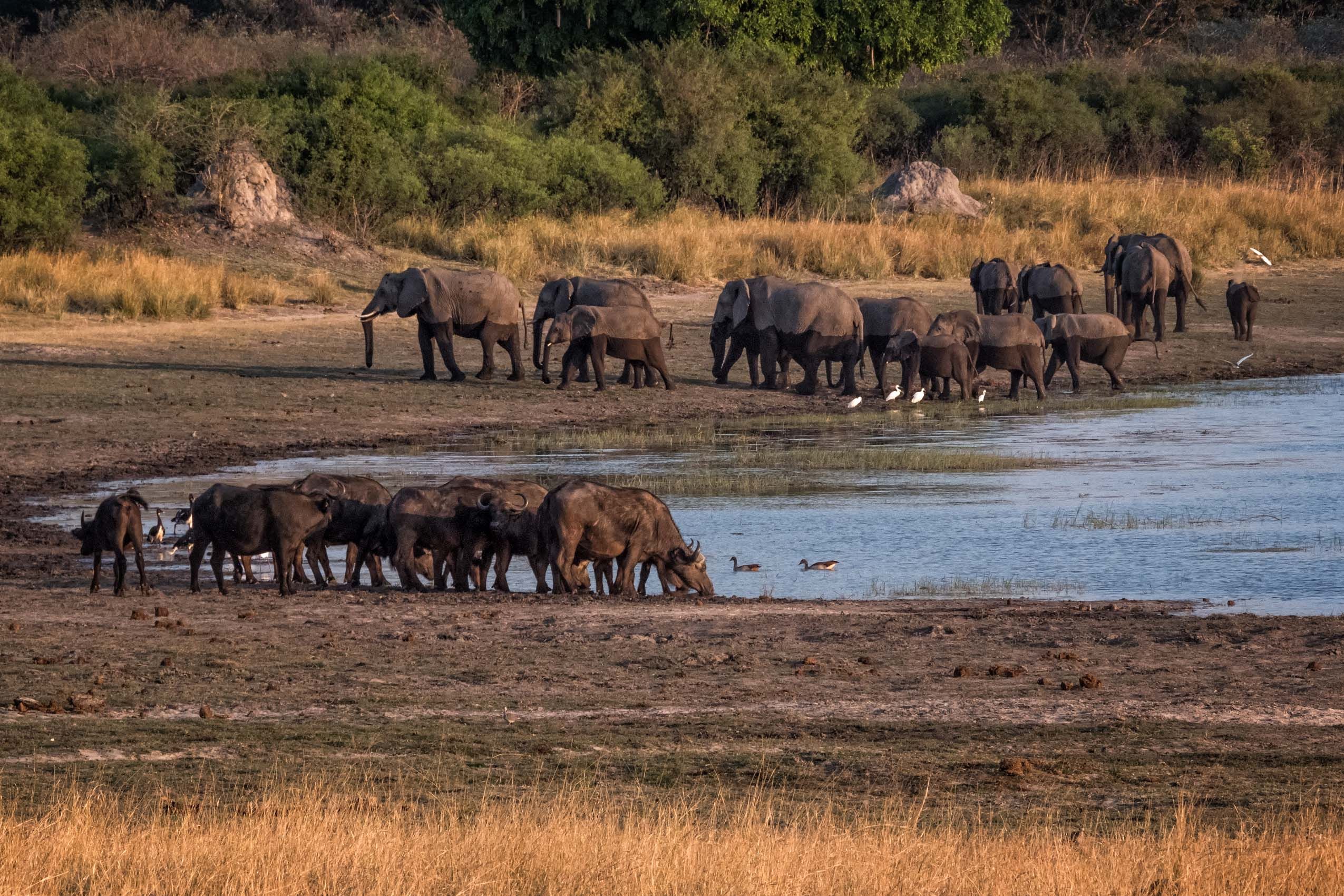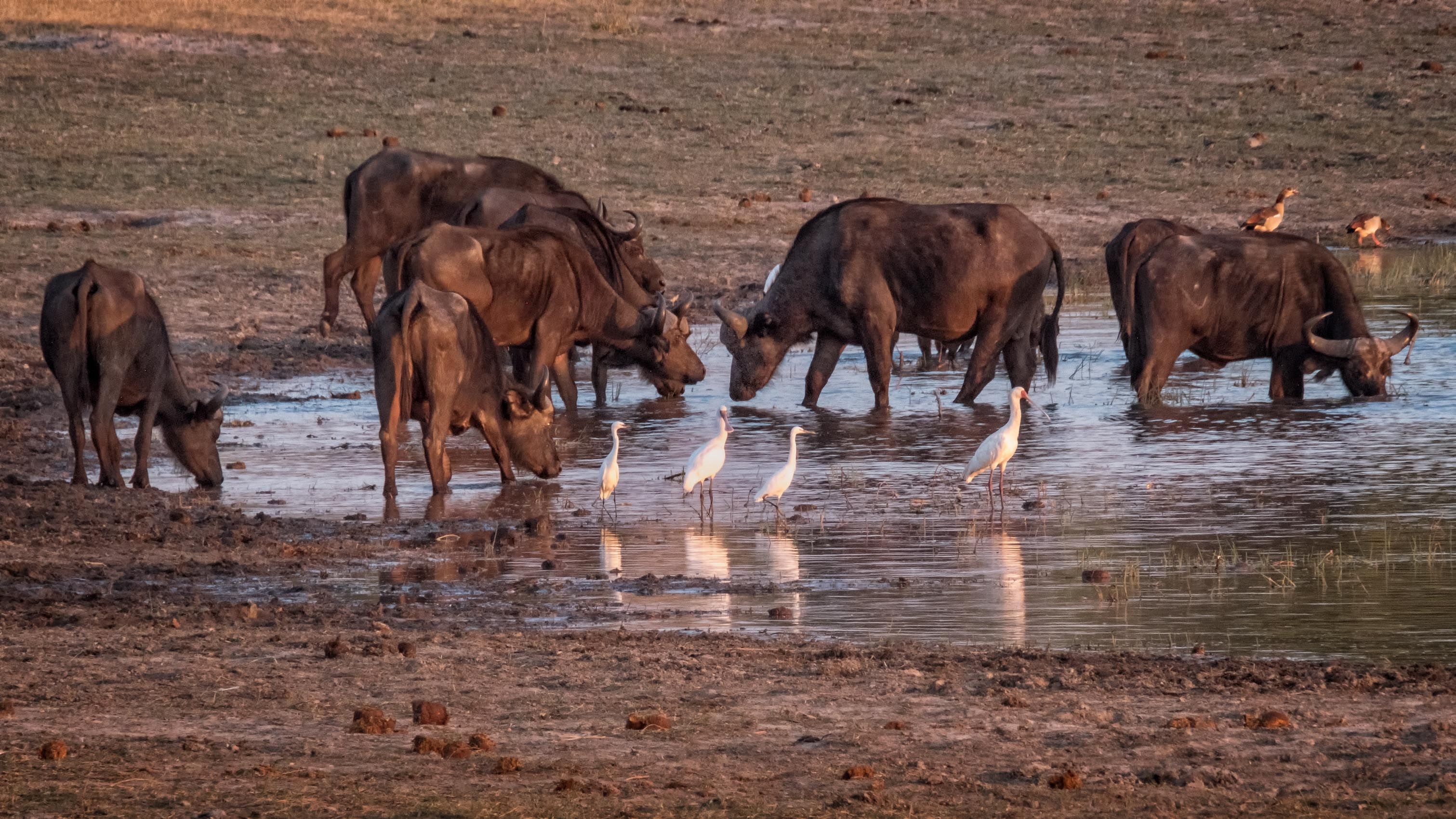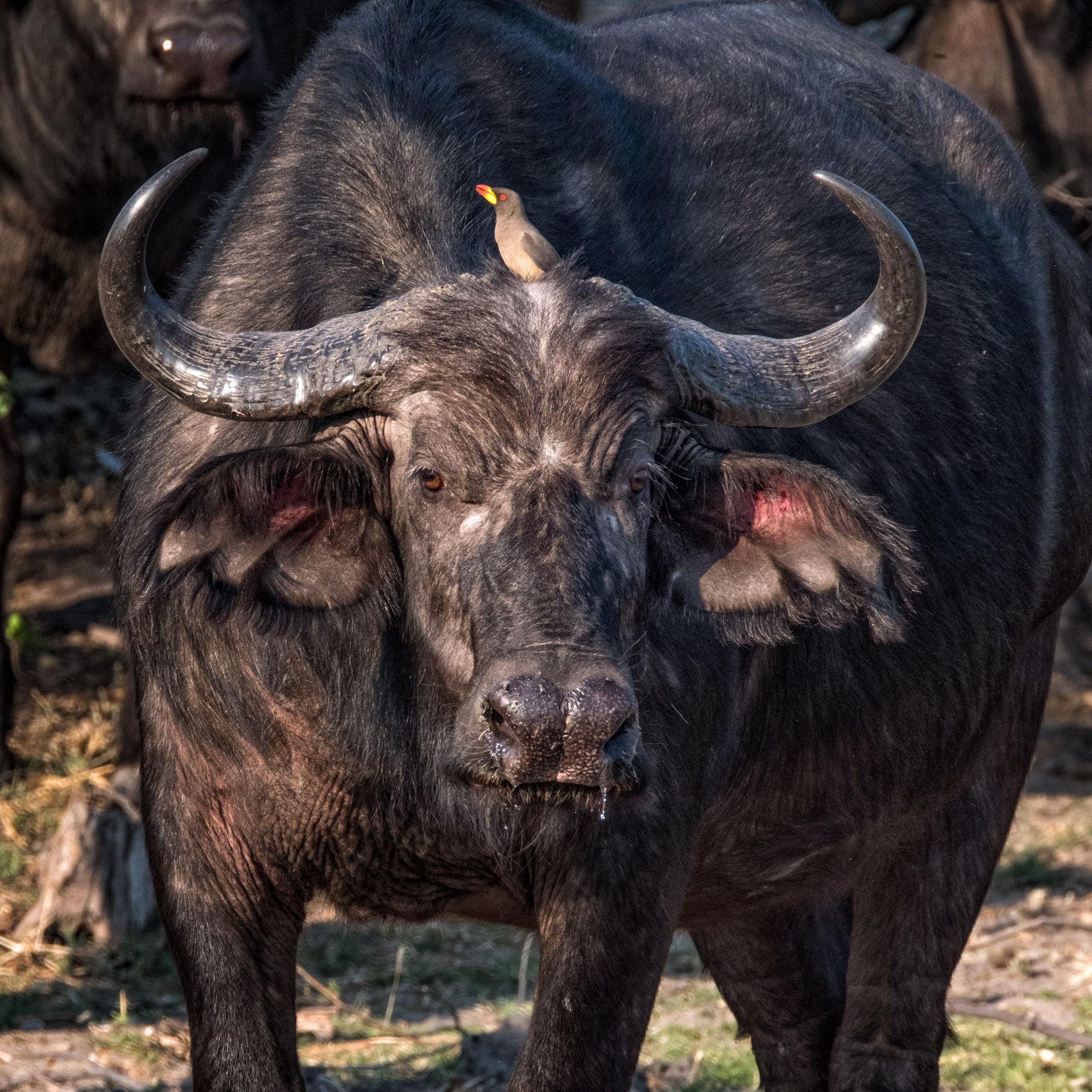NAMIBIA: Wildlife in the Landscape—Etosha & Caprivi
Etosha is a national park of more than 22,000 square kilometers in northern Namibia, centered on a vast salt pan that is the remnant of a great inland lake that existed here two million years ago and that continues to hold water seasonally after summer rains. The park’s origin was in the enlightened 1907 establishment of protected game reserves across most of northern Namibia by the German colonial governor. The pan comprises about a quarter of the park’s area, the rest consisting of a variety of environments from forest to savannah to treeless plain. Because the park is completely fenced, preventing seasonal migrations, during the dry season wildlife tends to concentrate at the many springs and water holes in the park. Thus wildlife viewing is at its best at water holes during the dry season, although it continues to be highly variable from place to place, day to day, and hour to hour. The park supports more than a hundred mammal species and more than three hundred bird species. With luck, you can witness members (and sometimes large herds) of different species coming and going and interacting at a waterhole over the course of a couple of hours.
The other region represented in this portfolio is the Caprivi Strip, a narrow panhandle in the far northeast of Namibia sandwiched between Angola and Zambia to the north and Botswana to the south. Ecologically and culturally, this lush semi-tropical area of rivers, marshes and woodlands is more akin to these countries than to the rest of Namibia. I spent time in the western part of the Strip, in the Mahango and Buffalo reserves that are parts of Bwabwata National Park. These areas, watered by the Kwando river, are home to large herds of elephants and water buffalo, among other species.
Images in this portfolio include representatives of the following species: lion, rhinoceros, spotted hyena, springbok, zebra, oryx, wildebeest, kudu, hartebeest, eagle, ostrich, secretary bird, wild dog,meerkat, warthog, giraffe, elephant, water buffalo.



















